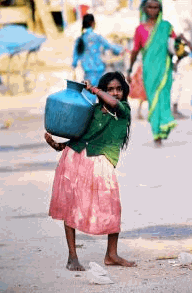Out-Outsourcing
by Chris Makler One of the biggest economic stories of the past decade has been the practice of outsourcing jobs from the U.S. to India. From the start, it was an enormously profitable idea: American companies could create a “back office” halfway around the world that would work while the folks in the American “front office” slept. Rather than getting 8 or 10 hours per day of productive work, companies could be productive around the clock.
One of the biggest economic stories of the past decade has been the practice of outsourcing jobs from the U.S. to India. From the start, it was an enormously profitable idea: American companies could create a “back office” halfway around the world that would work while the folks in the American “front office” slept. Rather than getting 8 or 10 hours per day of productive work, companies could be productive around the clock.Of course, American companies couldn’t all just set up shop in India—the fixed costs are too great. So Indian entrepreneurs began founding companies to provide back-office services to American firms. One of these was Infosys Technologies. Now, the New York Times reports, Infosys and its Indian rivals are opening back offices of their own in Brazil, Chile, Uruguay, the Czech Republic, Mexico—and even the United States. The article states:
In a poetic reflection of outsourcing’s new face, Wipro’s chairman, Azim Premji, told Wall Street analysts this year that he was considering hubs in Idaho and Virginia, in addition to Georgia, to take advantage of American “states which are less developed.”In other words, globalization has come full circle: now you can work in Georgia for an Indian company providing services for an American company.
Discussion Questions
1. Consider a company in Silicon Valley that outsources some of its work to Infosys in India, which in turn outsources some of its work to an office complex in Idaho. Suppose the project is handled by one programmer in each location, and suppose that each programmer is equally talented. In all probability, the wages earned by each programmer are different. What explains this difference?
2. Some jobs, like computer programming, are easily outsourced. Others, like providing haircuts or construction, are not. What effect do you think an increase in outsourcing would have on the wages of computer programmers, barbers, and construction workers? What about the relative prices of software, haircuts, and housing?
3. The increase in outsourcing over the past decade or so is what economists call a disequilibrium phenomenon. Disequilibrium occurs when there is a rapid change in the way things are done—for example, a rapid shift in a demand or supply curve—and prices and quantities have not yet fully adjusted to their new equilibrium levels. What do you think the new equilibrium will look like? What impact do those expectations have on the choices you need to make in college—such as what to major in, or what companies you should try to get a summer internship with?
Labels: Globalization, India, Labor



